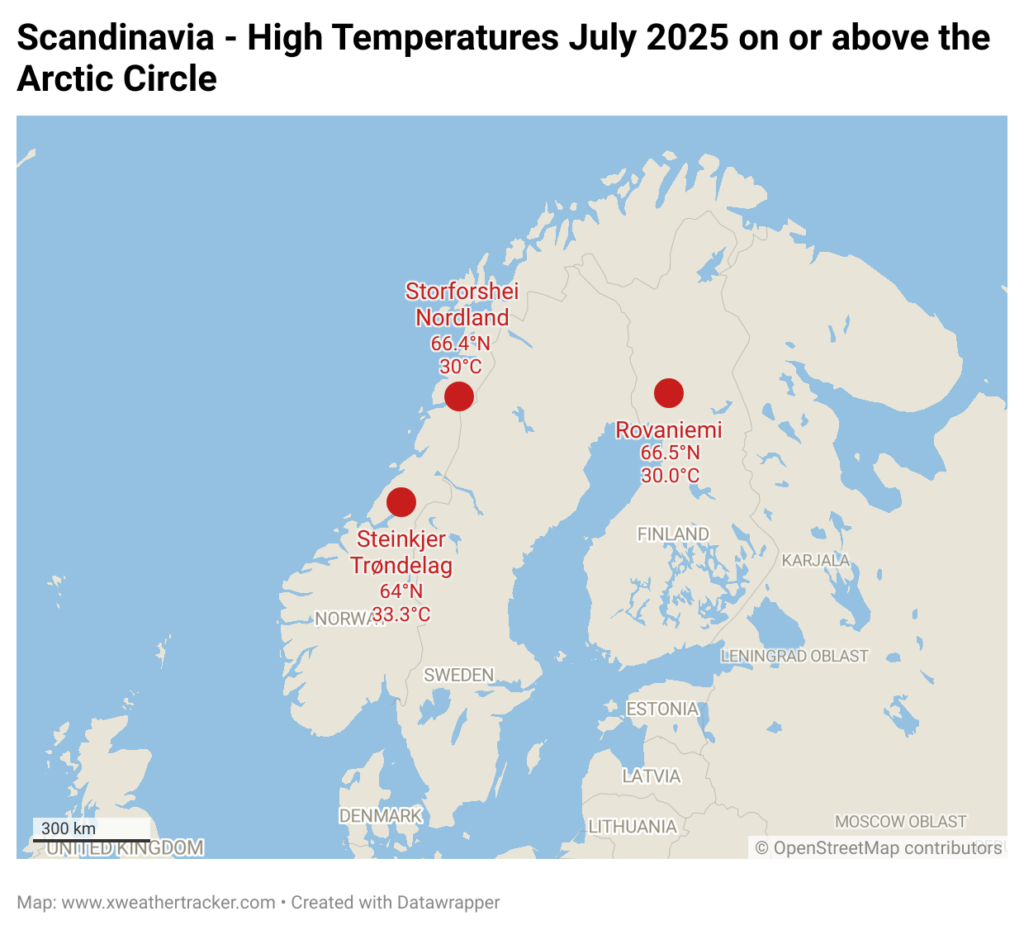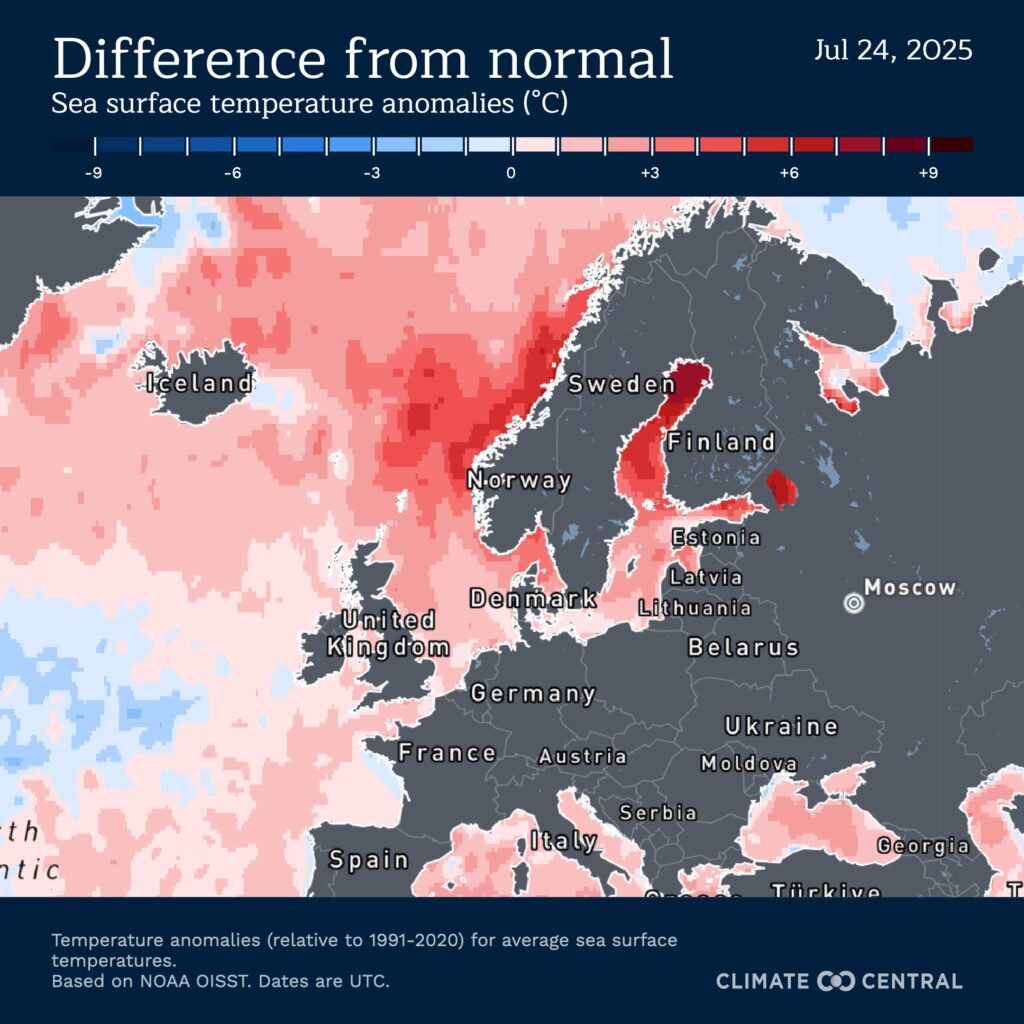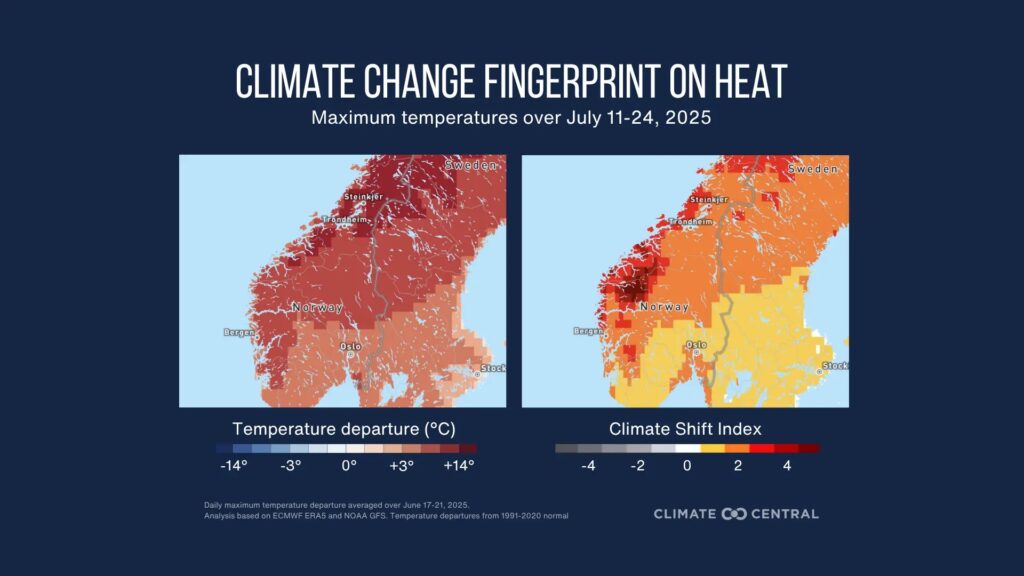The heat just continues in Norway with higher than normal temperatures at the Arctic Circle
Earlier in the month I highlighted the anomalous high temperatures being experienced in Scandinavia and in particular, Norway and Iceland. The heatwave in Norway has continued and in the last week temperatures of 30°C have been recorded in locations on the edge of or above the Arctic Circle.
From the 11 July for 13 straight days a temperature has been recorded at 30°C or above. in Namsskogan at 65°N and Grong at 64°N and breaking the previous record of 12 days set in 1982. An astonishing heat event with temperatures 8°C to 10°C above normal for July. As outlined below also the weather station in Storforshei, has recorded 12 consecutive days of temperatures at or above 30°C.

Sea surface temperatures off Norway’s northern coast are also exceptionally warm. Ocean temperatures exceeding 19°C are currently 5.5°C to 6°C above average for this time of year. This unusual warmth may further amplify the record heat being experienced on land.

A rapid analysis of this heat event by Climate Central reveals that daily maximum temperatures reached a Climate Shift Index (CSI) level 3 in cities across Norway, including Trondheim and Bergen. A CSI of 3 means human-induced climate change made this event at least three times more likely, highlighting a significant climate change impact.

Further east along the Arctic Circle, extreme temperatures have also been experienced in northern Siberia with a weather station at 68°N latitude reporting a high of 35°C on 22 July. Also on the same day at Tyumyati (71.5°N) a high of 32.8°C was experienced with it being reported that at Habarova (72°N), a minimum of 21.5°C was experienced with a maximum of 32.1°C. The above data remains to be fully ratified.
To give some context in relation to the latest data, the highest temperature ever recorded above the Arctic Circle was in June 2020, at Verkhoyansk in north east Siberia (67.5°N) with a temperature of 38°C being recorded.
Average summer temperatures in northern Siberia typically range from 5°C to 15°C although there can be significant local variations brought about by altitude, proximity to the Arctic Ocean, and inland versus coastal locations. Daily highs in July may occasionally reach 20–25°C further inland.
Since the 1990s, the Arctic has warmed at a rate significantly higher than the global average, a process termed Arctic amplification – 0.69°C per decade against 0.26°C globally. This accelerated warming impacts the Arctic cryosphere, leading to reduced snow and ice cover. The loss of ice and snow decreases surface reflectivity (albedo), intensifying warming through the temperature-albedo feedback loop, a key mechanism driving Arctic amplification.
Overlaid on the long-term warming trend are short-term variations in weather and climate patterns, which affect the extent and spread of temperature anomalies.
It is also important to remember that Europe is the fastest-warming continent and has warmed by approximately 0.53°C per decade since the mid-1990s based on the findings of the ERA5 dataset of the Copernicus Climate Change Service.